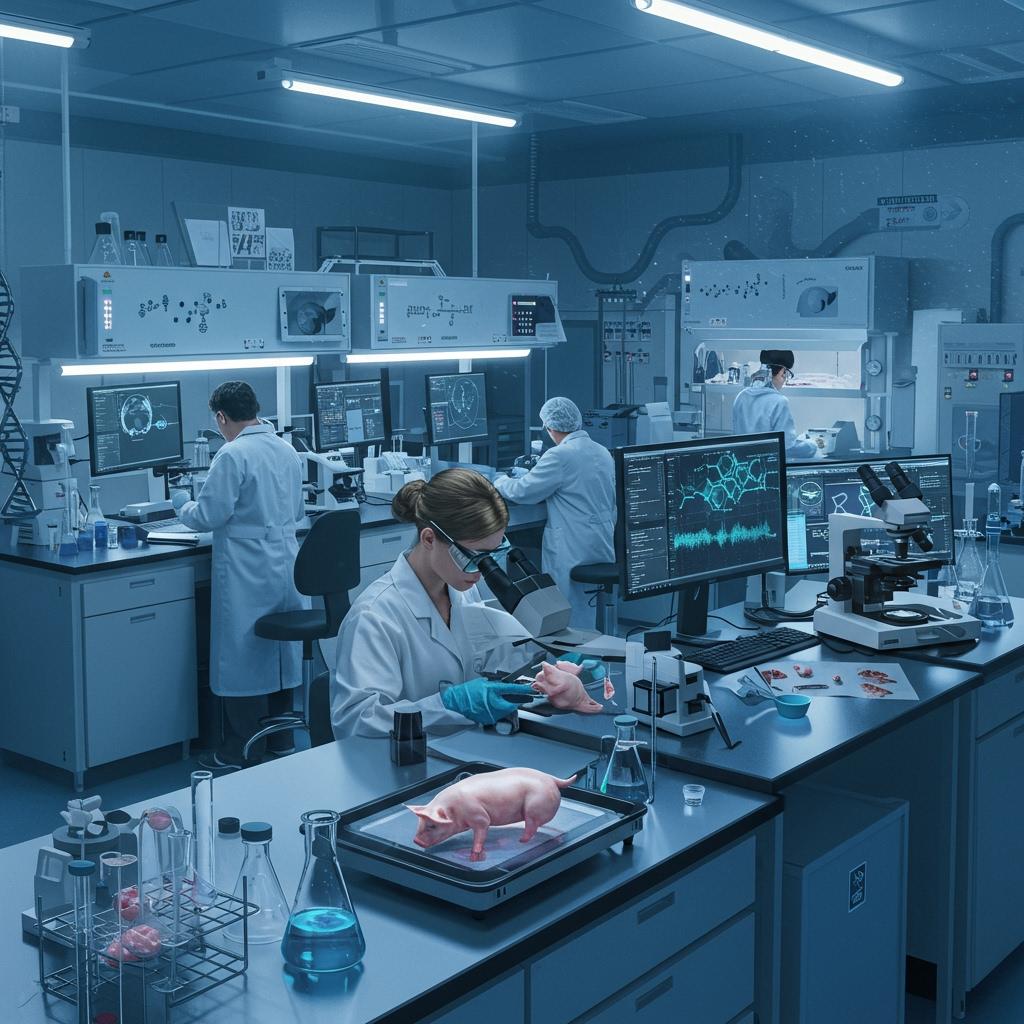Can We Grow Human Organs Inside Pigs?
 Scientists use gene-editing tools to modify pig embryos, opening doors to growing human-compatible organs inside pigs.
Scientists use gene-editing tools to modify pig embryos, opening doors to growing human-compatible organs inside pigs.
By Peter Teoh, Science Writer
Introduction
Imagine a future where people waiting for organ transplants don’t have to wait for a human donor. Instead, they receive perfect organs grown inside pigs! This might sound like science fiction, but thanks to huge leaps in genetic engineering and biology, researchers are getting closer to making this a reality. But how can we grow human organs inside pigs, and what challenges do scientists face along the way?
Why Pigs? The Perfect Organ Donors?
Pigs have long been the focus of organ transplant research for several reasons. Their organs are similar in size and function to human organs, and they reproduce quickly, making them excellent candidates to provide a steady supply of organs. But there’s a big problem: our immune systems usually reject pig organs because they see them as foreign invaders.
The Immune System Challenge
Our immune system is like a security guard that protects us from germs and anything it doesn’t recognize. When a pig organ is transplanted into a human, the immune system attacks it, causing rejection and failure of the organ.
To overcome this, scientists have used genetic engineering to modify pig organs so they’re more compatible with humans. This involves changing the pig’s DNA to remove or alter certain genes that trigger immune attacks and adding human genes that help the organ “hide” from the immune system.
Gene Editing: The CRISPR Revolution
The game-changer in this research is a powerful tool called CRISPR-Cas9, which acts like molecular scissors to precisely cut and edit DNA. Using CRISPR, scientists can:
- Remove pig genes that produce sugars causing immune reactions.
- Add human genes that help the organ fit better in the human body.
- Inactivate pig viruses naturally embedded in pig DNA, so there’s no risk of virus transmission to humans.
In a recent breakthrough, researchers made about 69 genetic edits to pig kidneys to make them safe and functional in humans[1][8].
Growing Human Organs Inside Pigs: The Chimera Approach
Another exciting area is creating interspecies chimeras, which are animals that contain cells from two different species — in this case, pigs and humans. Scientists inject human stem cells into pig embryos, hoping these cells will develop into human organs inside the pig as it grows.
This is still early science, but some success has been seen where human liver cells grew inside pigs[2]. The goal is to grow fully human organs inside pigs that can be harvested for transplant. However, this method faces challenges like controlling how human cells grow and making sure the organs develop properly.
Real-World Progress: Transplanting Pig Organs into Humans
In 2024, the first genetically edited pig kidney was successfully transplanted into a living human patient[1][6]. The kidney showed it could function and wasn’t immediately rejected by the patient’s immune system. This surgery was a huge step forward, proving that with the right gene edits and immune-suppressing drugs, pig organs might soon save human lives.
Other efforts include pig heart transplants into baboons that survived months, showing promise for human heart transplants in the future[3]. But scientists caution that there are still many hurdles to overcome, including long-term organ survival and safety.
What’s Next? The Road Ahead
Researchers are now moving toward formal clinical trials to better understand how well pig organs can work in humans in the long term[5]. They’re also improving gene-editing techniques and immune therapies to reduce the chances of organ rejection. Meanwhile, ethical questions about mixing human and pig cells are being carefully discussed.
Closing Thoughts
Growing human organs inside pigs might sound like a futuristic idea, but it’s quickly becoming a reality thanks to advanced genetics and biotechnology. This research could save thousands of lives by ending the shortage of donor organs. While challenges remain, each breakthrough brings us closer to a world where no one has to wait in despair for the organ they need.
Side Notes
-
Xenotransplantation: The term for transplanting organs or tissues between different species, like pig to human.
-
Porcine Endogenous Retroviruses (PERVs): Viruses embedded in pig DNA that scientists must inactivate to prevent infection in human recipients.
-
Immune Suppressants: Drugs used to stop the immune system from attacking transplanted organs.
-
Chimeras: Organisms made up of cells from two different species.
Trending Sidebar
-
CRISPR-Cas9: Revolutionizing gene editing across medicine and agriculture.
-
First Pig Kidney Transplant in Human: Landmark operation in 2024 opens new possibilities.
-
Future of Organ Transplants: Combining biotechnology and ethics to save lives.
-
Stem Cell Advances: Paving the way for lab-grown human organs.
-
Animal Ethics in Science: Debates on the use of animals in cutting-edge medical research.